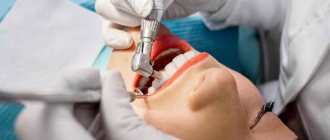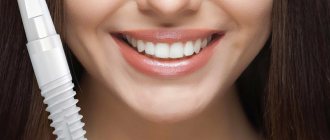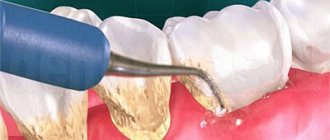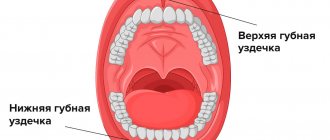The importance of oral hygiene
The health of our teeth and gums directly depends on proper oral hygiene. The importance of daily hygiene procedures is difficult to overestimate, but it is often easy to underestimate and pay with the loss of teeth even at a young age. So the statement of dentists that one of the most effective and at the same time simple ways to prevent dental diseases is proper and regular dental and oral hygiene in children and adults is more relevant than ever. We should not forget that hygiene procedures should not be limited to just brushing your teeth at home.
Preventive oral hygiene is a comprehensive measure that includes daily brushing of teeth and visiting a hygienist at least once a year. The fact is that in order to maintain teeth and gums in a healthy condition, it is necessary to promptly and efficiently remove dental plaque, as well as thick plaque on the tongue. Food debris and soft plaque can be removed with a toothbrush and toothpaste. But the removal of tartar (mineralized dental deposits) is carried out by a dentist using special means and instruments, for example, Air Flow. In this regard, comprehensive oral care implies individual and professional hygiene.
Contract manufacturing
The interpretation of the concept of “oral hygiene products” (ODH) means all means and substances that are used to cleanse, prevent, treat and refresh the oral cavity. They are not classified as medications.
Individual oral hygiene products are a vital thing for every person. It is very important to choose them correctly. Before buying a brush or toothpaste for yourself or your loved ones, remember one simple truth: you don’t skimp on your health. By purchasing cheap and low-quality products, you doom yourself to the fact that in the future you will spend a tidy sum on a trip to the dentist. Try to choose quality products and only from trusted manufacturers.
What is the classification of oral hygiene products?
If we classify SGPR by frequency of use, we can distinguish two groups:
1. The first group includes the basic oral hygiene products that we use every day. This is a brush and toothpaste.
Currently, the range of toothbrushes is simply amazing. They differ in design and principle of operation. There are ordinary products that most people use. There are electric brushes that run on rechargeable batteries. There are also ultrasonic products.
Whatever type of brush you choose, pay attention to the following points: what size the head is, what kind of bristles it is and how comfortable the handle design is.
Many manufacturers offer brushes with five different degrees of hardness, ranging from the softest to super hard bristles. The best option is a brush of medium hardness. Its main advantage is that it effectively cleans teeth and does not injure the gums. During the year, the brush is changed three to four times. Take a particularly responsible approach to choosing children's oral hygiene products. To avoid scaring the child away from the daily and important procedure of brushing his teeth, the first brush should have very soft bristles. Next, when replacing a toothbrush, you can select products with stiffer bristles. Pay attention to the design of the product for a child. He will like a brush in the shape of a cartoon character much more than a regular product.
Choosing toothpaste also has its own characteristics. First of all, pay attention to the composition of the paste. Buy an oral hygiene product that will protect your teeth and gums from caries and periodontal disease. It is advisable to use a paste containing medicinal plants. But you shouldn’t trust whitening components. The best way to whiten your teeth is by brushing your teeth regularly.
Choosing toothpaste also has its own characteristics. First of all, pay attention to the composition of the paste. Buy an oral hygiene product that will protect your teeth and gums from caries and periodontal disease. It is advisable to use a paste containing medicinal plants. But you shouldn’t trust whitening components. The best way to whiten your teeth is by brushing your teeth regularly.
2. The second group is additional oral hygiene products. This includes dental floss, fresheners and mouth rinses. Dental floss is needed to thoroughly clean the interdental space, since the bristles of the brush simply do not reach there. Fresheners and rinses have a largely cosmetic effect.
The group of additional SGPRs also includes traditional medicine. It is very useful to rinse with decoctions and infusions prepared from medicinal plants.
To keep your teeth and gums healthy and beautiful, you need to use care products regularly, and not occasionally. And it is advisable to use them comprehensively.
Recently, liquid oral hygiene products have become increasingly popular.
The most popular among them are rinse aids. At its core, a rinse aid is a non-alcoholic solution or containing a small amount of ethyl alcohol. It acts as a preservative. Alcohol-free products can be used by everyone: both children and adults who cannot tolerate alcohol. Rinse aids can be used both as a preventative and for treatment. They contain extracts of medicinal plants, essential oils and antiseptics. First you need to brush your teeth, and then rinse your mouth with mouthwash for half a minute.
In addition to rinses, there are also other liquid SGPR: elixirs, concentrates, foams and sprays.
Every person is recommended to visit the dental office at least once every six months. They use professional oral hygiene products to remove tartar. This procedure is carried out using ultrasound.
After removing tartar from the teeth, modern oral hygiene products used by professionals also include grinding and polishing. Typically, professional teeth cleaning lasts about an hour. Spend just 60 minutes of your precious time and your teeth will be strong and healthy for many years.
Systematic and competent oral care is the main part of preventive measures. The food that a person eats often, instead of cleansing the teeth, causes bad breath and serves as the basis for the formation of tartar.
In this case, presentation oral hygiene products come to the rescue. If they are chosen correctly, then you will not be afraid of any caries or periodontal disease. An experienced dentist will help you choose the right product. He will examine your oral cavity and tell you which medications are best to use and in what order at home. Trust the professionals!
Individual oral hygiene
Individual oral hygiene is most effective if you follow certain rules on how to brush your teeth. As you know, there are many ways - each of them is correct and complete, it all depends only on our personal preferences. But it is still advisable to listen to the following recommendations from dentists:
- Always start brushing your teeth with the same row of teeth;
- adhere to a certain sequence of teeth cleaning so as not to miss any area;
- Carry out cleaning at the same pace in order to maintain the required duration of cleansing.
Of course, you need to pay attention to your teeth brushing technique. If, for example, you brush your teeth across the dentition, the enamel will wear off over time. Therefore, individual oral hygiene must be carried out in compliance with the technique of brushing teeth (you cannot even make circular movements - they must be perfectly round). But in our version they are more oval. Therefore, due to non-compliance with this important rule, the enamel by about 35 years of age is severely damaged, if not completely erased. However, if you use an ultrasonic brush, all of the above is not relevant for you. In addition, do not forget that cleaning the tongue with special scrapers is a necessary component of oral hygiene.
How to brush your teeth correctly
To ensure proper oral hygiene, it is not enough to choose the right toothbrush, toothpaste and other products. Proper cleaning technique must be followed to completely remove plaque and tartar from the enamel surface. The basic rules of this procedure are as follows:
- making rotational movements, trying to remove food debris from the interdental space, move it from the gum to the tooth;
- Using gentle back-and-forth movements, clean the entire tooth: outer, inner and chewing surfaces. The procedure should take about 3 minutes;
- clean the surface of your tongue to freshen your breath and rid your mouth of bacteria as much as possible;
- use dental floss;
- Rinse your mouth with mouthwash for 30 seconds.
Dentists distinguish several methods of brushing teeth. The appropriate one is determined individually; it is better to consult a dentist about this. What all methods have in common is that they are performed for at least three minutes and at the same pace.
On average, instead of the allotted three minutes, people spend 46 seconds brushing their teeth.
Universal cleaning suits everyone. With it, two teeth are cleaned in turn in the direction from the gums to the cutting part of the tooth. The outer side of the teeth is cleaned first, and only then the inner side. If there are no gum diseases, you can complement the procedure with a massage using circular movements of the gums.
During standard brushing, the brush should be held at a 45-degree angle to the gum.
Brushing harshly will help remove plaque effectively, but is not suitable for people with painful gums. The brush is positioned perpendicular to the buccal surface and moves in a circle from the internal surfaces to the chewing surfaces.
Gentle brushing will not harm sensitive gums. Vertical movements from the gums down are made with the teeth closed when cleaning the front surface and with the jaw open when cleaning the inner surface.
The technique of using dental floss also implies several rules. First, the floss should be about 45 cm long. For each brushing, use a new section 3-5 cm long. The interdental spaces should be cleaned with gentle movements, following the contours of the gums. Go to the surface of the teeth below the gum line, but do it carefully, avoiding sudden movements.
Basic personal oral hygiene products:
- toothpastes, gels, tooth powders;
- toothbrushes;
- chewing gum (therapeutic and prophylactic).
It is recommended to choose toothpastes depending on the presence of certain problems or specific tasks. If you have had dental implants, your best choice would be toothpaste for implants. To lighten the enamel surface, you should pay attention to whitening pastes. But to strengthen teeth, restorative products are suitable, for example, Theodent or Swiss Smile Crystal toothpaste with theobromine.
Irrigators
Dentists note that even the most modern toothbrush does not completely remove plaque - its remains can be regularly observed in the interdental spaces, the area of which is about 30% of the entire surface of the teeth. Also, deposits remain in the gum line and especially in the gum pockets. Moreover, with poor oral hygiene, the brush drives food particles into these recesses, causing inflammation.
An irrigator is a device that creates a stream of water under pressure and washes away plaque residues from hard-to-reach places. It has a number of advantages over a toothbrush:
- The water flow under pressure has a gentle massage effect and has a beneficial effect on the condition of the gums.
- The irrigator best cleans narrow areas in bridge structures, braces and other orthodontic products.
- Correctly selected operating mode and the use of special attachments provide a preventive and therapeutic effect for inflamed and “loose” gums.
- With the help of an irrigator, you can irrigate the oral cavity not only with water, but also with medicinal solutions, effectively carrying out therapeutic procedures prescribed by your doctor.
However, despite the high cleaning efficiency, the irrigator does not replace, but complements the toothbrush as a means of individual oral hygiene. Only regular alternating use of both instruments will ensure the complete destruction of pathogenic microflora in the entire oral cavity, significantly reduce the risk of developing diseases, and preserve the natural whiteness and purity of the enamel.
There are also additional oral hygiene products. These include:
- floss (dental floss), toothpicks;
- oral irrigators (before choosing the best irrigator, be sure to study the main characteristics of the models);
- means for cleaning the tongue: scrapers, scraper brushes;
- Mouth rinses, oral deodorants, teeth whiteners;
- denture treatment powders/denture treatment tablets;
- foam for oral hygiene (foam dissolves plaque well and is indispensable where it is not possible to use standard oral hygiene products; just hold the foam in your mouth for 20–30 seconds and spit).
The unique, multifunctional device JETPIK JP200-Elite combines an electric sonic toothbrush, irrigator and dental floss. The components and the device itself are stored in a convenient plastic container, which is ideal for traveling or storing in a small bathroom.
Oral hygiene is important not only for the prevention of caries, but also for free, comfortable communication with others. Stained yellow teeth and bad breath will not make anyone attractive. Aesthetic dentistry procedures such as veneers and expensive laser teeth whitening will not make sense without basic hygiene procedures.
Publisher: Expert magazine about dentistry Startsmile.ru
Brushes for cleaning interdental spaces
The brushes are designed for cleaning interdental spaces, spaces under fixed orthodontic arches, areas of bridges and spaces between implants. The brushes vary in shape - conical, cylindrical, and in size.
Recommendations for use:
1. Bring the brush to the interdental space. Find the correct angle of the brush for comfortable and easy insertion of the brush.
2. Gently insert the brush until it comes out the other side.
3. Make one or two back-and-forth movements, remove the brush and rinse it under running water.
4. Proceed with cleaning the next interdental space.
5. Never insert the brush into narrow interdental spaces with force. A properly selected brush easily fits into the interdental spaces. Your dentist or hygienist will help you choose the right size brush.
6. It is recommended to change the brush every 5-7 days.
Material and methods
The study was conducted at the Department of Therapeutic Dentistry of the Perm State Medical University named after. THEM. Sechenov. A non-randomized controlled trial with a split-mouth design was conducted.
At the first stage, 76 patients were screened and a study group of 25 people (10 men and 15 women) was formed.
Inclusion criteria: written informed consent of the patient to participate in the study; age from 18 to 35 years; intact periodontium.
Non-inclusion criteria: presence of non-removable orthopedic and orthodontic structures in the oral cavity; partial edentia; presence of implants; the presence of carious cavities; presence of inadequate restorations according to class II; supragingival calculus.
Criteria for excluding patients from the study: patient refusal to further participate in the study; failure to comply with study recommendations.
All patients were recommended a Curaprox 5460 toothbrush (Curaprox, Switzerland) as the main hygiene product; in the 1st quadrant, individually selected CPS Prime brushes (Curaprox, Switzerland) were additionally used; in the second, Curaprox floss (Curaprox) , Switzerland), in the third - monobeam brush Curaprox 1006 (Curaprox, Switzerland), in the fourth quadrant no additional products were used.
The hygienic state of the oral cavity was assessed using the Silness-Loe and Navy-Rustogi indices immediately before the start of the study and after 4 weeks.
The study was approved by the Local Ethics Committee of the Perm State Medical University named after. THEM. Sechenov (Sechenov University): Order No. 470 R dated October 19, 2012 “On the creation of a local ethics committee”, minutes No. 05−17 of the meeting of the Local Ethics Committee dated 06/14/17.
How to choose a toothbrush
Perhaps never before has the range of toothbrushes in stores been so large. Toothbrushes for children and adults, for sensitive gums and teeth, simple and for the most difficult to reach areas of the dental cavity, with “floating” bristles and a tongue cleaning pad. Why do toothbrushes need additional functions? How to choose a toothbrush among all this variety? Let's try to figure it out.
The fact is that a toothbrush is the very first and most necessary accessory for daily dental care. It is with the help of a well-chosen brush that we clean our teeth of food debris and plaque formed by bacteria. So that the cleaning fibers can reach small, invisible crevices between the teeth, and in order to carry out a good cleaning of wisdom teeth, brushes with “floating” bristles or heads are produced.
When brushing your teeth, it is also important not to forget other surfaces on which pathogenic microbes can accumulate. It is very important to brush your tongue twice a day, that is, every time you brush your teeth. You can buy a toothbrush with a tongue-cleaning surface or a separate brush. Special tongue brushes come in the form of a scraper or spoon. They gently clean the surface of the tongue without injuring it.
The stiffness of the toothbrush bristles
Another important point is the stiffness of the bristles. It’s not for nothing that in stores you can most often see a large selection of toothbrushes with medium-hard bristles. According to dentists, these fibers are most suitable for cleaning teeth; they provide safe pressure, have a gentle effect on the enamel and clean the crevices between teeth well. In addition, a brush with medium-hard fibers has a good massage effect - if you have strong gums, then lightly massage them at the end of your morning and evening brushing. This has a positive effect on blood circulation.
If your gums are weakened and bleeding, you need to use a brush with soft bristles. It does not touch the gums and at the same time copes with the main task - it cleans the tooth surface well.
Today there is also a selection of brushes that are additionally scented using a special composition. The brush may have a minty scent or the scent of medicinal herbs. The opinion of dentists on this matter is ambiguous. The fact is that each toothbrush has its own working life (usually it is two to three months, and after this period the brush must be replaced). The lifespan of a light aroma is even shorter, and it does not provide any additional cleansing function. Therefore, it is better to choose not a “flavored” toothbrush, but a regular toothbrush and additionally buy a mouthwash for it.








